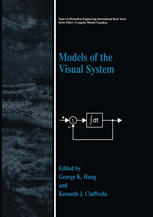

Most ebook files are in PDF format, so you can easily read them using various software such as Foxit Reader or directly on the Google Chrome browser.
Some ebook files are released by publishers in other formats such as .awz, .mobi, .epub, .fb2, etc. You may need to install specific software to read these formats on mobile/PC, such as Calibre.
Please read the tutorial at this link: https://ebookbell.com/faq
We offer FREE conversion to the popular formats you request; however, this may take some time. Therefore, right after payment, please email us, and we will try to provide the service as quickly as possible.
For some exceptional file formats or broken links (if any), please refrain from opening any disputes. Instead, email us first, and we will try to assist within a maximum of 6 hours.
EbookBell Team

5.0
108 reviewsSome of the best vision scientists in the world in their respective fields have contributed to chapters in this book. They have expertise in a wide variety of fields, including bioengineering, basic and clinical visual science, medicine, neurophysiology, optometry, and psychology. Their combined efforts have resulted in a high quality book that covers modeling and quantitative analysis of optical, neurosensory, oculomotor, perceptual and clinical systems. It includes only those techniques and models that have such fundamentally strong physiological, control system, and perceptual bases that they will serve as foundations for models and analysis techniques in the future. The book is aimed first towards seniors and beginning graduate students in biomedical engineering, neurophysiology, optometry, and psychology, who will gain a broad understanding of quantitative analysis of the visual system. In addition, it has sufficient depth in each area to be useful as an updated reference and tutorial for graduate and post-doctoral students, as well as general vision scientists.